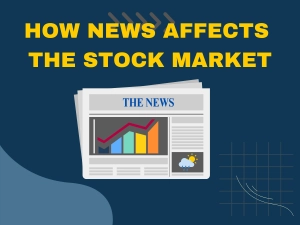How US Dollar Strength Impacts Global Markets

In global trade and finance, the US dollar is the primary medium of exchange. Over 60% of global foreign exchange reserves are held in dollars, and a significant portion of international trade is invoiced in dollars, even between countries that do not involve the US directly. This widespread use is due to the dollar’s liquidity, stability, and the sheer size of the US economy. As a result, fluctuations in the dollar’s value can have far-reaching effects, influencing everything from commodity prices to the financial health of nations. The dollar’s strength or weakness can alter trade balances, investment flows, and economic policies worldwide.
Factors Contributing to Dollar Strength
Several key economic indicators significantly influence the strength of the US dollar. These include the country’s gross domestic product (GDP), employment, inflation, and interest rates. When the US economy performs well, with high GDP growth and low unemployment, the dollar strengthens because investors view it as a safe and profitable currency. Conversely, high inflation can weaken the dollar unless countered by higher interest rates the Federal Reserve sets.
The Federal Reserve (the Fed) influences the dollar’s strength through its monetary policies. By adjusting interest rates, the Fed can make the dollar more or less attractive to investors. Higher interest rates offer better returns on investments denominated in dollars, drawing more foreign capital and increasing demand for the dollar. Conversely, lower interest rates can result in depreciation of the dollar as investors seek higher returns elsewhere. The Fed’s policies are designed to balance economic growth and inflation but also impact the currency’s strength.
Geopolitical stability in the United States also contributes to the dollar’s strength. Investors are more likely to invest in dollar-denominated assets when the US is perceived as stable and predictable. This stability includes political stability, economic policies, and the country’s legal and regulatory environment. Global uncertainties, such as conflicts or economic instability in other parts of the world, can also drive investors to the safety of the US dollar, further strengthening it.
Investor confidence is another critical factor. When global investors have confidence in the US economy and its prospects, they are more likely to buy US assets, which increases demand for the dollar. Various factors can influence this confidence, including economic performance, political events, and perceptions of how well the country manages its public debt. Positive news about the US economy or effective handling of economic challenges can boost confidence and, consequently, the dollar’s strength.
Exchange rates and the US Dollar Index (DXY)
The strength of the US dollar is often measured using exchange rates and the US Dollar Index (DXY). Exchange rates compare the value of the dollar to other currencies. For example, if the exchange rate between the US dollar and the euro is 1.1, it means one dollar can buy 1.1 euros. When the dollar appreciates, it can buy more of another currency, indicating strength.
The US Dollar Index (DXY) is another essential tool for measuring the dollar’s strength. The DXY compares the dollar against a basket of six major currencies: the euro, British pound, Canadian dollar, Swedish krona, Japanese yen and Swiss franc. A higher DXY value indicates a stronger dollar. This index provides a broad measure of the dollar’s value relative to a diverse group of currencies, giving a comprehensive picture of its overall strength in the global market.
Impact on Global Trade

When the US dollar strengthens, it becomes more powerful than other currencies. This makes imported goods cheaper for American businesses and consumers. For example, if a US company buys raw materials from Europe, a stronger dollar means they can get more for their money. This can help lower costs and improve profit margins for US importers, making foreign goods more affordable and attractive to US buyers.
On the other hand, US exporters face challenges when the dollar strengthens. Their products become more costly for foreign buyers, who must spend more of their own currency to purchase US products. This can result in a decrease in demand for US exports, as buyers might turn to cheaper alternatives from other countries. As a result, American companies that rely on international sales may see their revenues drop, and they might need to adjust prices or find ways to cut costs to remain competitive.
Financial Markets and Investments
Correlation between dollar strength and equity market performance
The strength of the US dollar significantly affects stock markets worldwide. When the dollar strengthens, it often indicates that investors are confident in the US economy, which can boost US stock markets. However, the effect on international markets can be mixed. For instance, a strong dollar can make US exports more expensive, potentially hurting multinational companies that rely heavily on foreign sales. Conversely, foreign companies that export to the US may benefit from a strong dollar because their goods become cheaper for American consumers, potentially boosting their stock prices.
Sector-specific impacts and investor strategies
Various sectors of the economy react diversely to fluctuations in the strength of the dollar. For example, technology companies, which often have significant international sales, might see their revenues decline when the dollar is strong. Conversely, sectors like utilities, which are more domestically focused, may be less affected by currency fluctuations. Investors frequently adapt their strategies based on these dynamics. In a robust dollar environment, they might favour sectors less exposed to international markets or look for opportunities in foreign companies that benefit from US consumers’ more substantial purchasing power.
Influence on global bond yields and borrowing costs
The strength of the US dollar also influences global bond markets and borrowing costs. When the dollar strengthens, it can lead to higher yields on US Treasury bonds as investors seek safer investments with attractive returns. This can raise borrowing costs for the US government, other countries, and companies issuing dollar-denominated debt. Higher borrowing costs can lead to reduced spending and investment, potentially slowing economic growth in the US and globally.
Investment flows into and out of US Treasuries
A strong dollar typically attracts more investment into US Treasuries. These government bonds are considered one of the safest investments in the world, and their appeal increases when the dollar is strong. Investors from around the globe buy US Treasuries to safeguard their capital and earn steady returns. This increase in foreign capital can lead to a stronger dollar, creating a positive feedback loop. Conversely, investors might look for higher returns elsewhere when the dollar weakens, leading to capital outflows from US Treasuries and potentially weakening the dollar further.
Foreign Exchange Markets
Exchange rate volatility refers to the frequent and unpredictable fluctuations in the value of currencies. Several factors drive this volatility in the currency markets. Inflation rates, GDP growth, and employment figures play a significant role. For instance, strong economic data from the US can boost investor confidence in the dollar, causing it to strengthen. Conversely, weaker economic data can result in a weaker dollar. Political events and geopolitical tensions also contribute to volatility. Elections, trade negotiations, and conflicts can cause sudden shifts in currency values as investors react to changing circumstances and risks.
Market sentiment and speculative activities further amplify exchange rate volatility. Traders and investors often react to news, rumours, and forecasts, buying or selling currencies in anticipation of future movements. Central bank policies, such as interest rate adjustments, influence currency values. Higher interest rates typically attract foreign investment, strengthening the currency, while lower rates can have the opposite effect. These factors combined make the currency markets highly dynamic and sometimes unpredictable.
Predicting Dollar Movements

Economic forecasts and market expectations
Predicting the movements of the US dollar is a complex task involving analysing various economic factors and market trends. Economic forecasts from reputable sources, such as central banks, financial institutions, and economic research firms, provide valuable insights into the future trajectory of the dollar.
Market expectations also play a critical role in predicting dollar movements. Traders, investors, and speculators closely monitor geopolitical events, central bank policies and economic data releases to anticipate shifts in currency values. Market sentiment can influence trading decisions and contribute to short-term dollar value fluctuations. Additionally, technical analysis techniques, such as chart patterns and indicators, help traders identify trends and potential turning points in currency markets.
Potential scenarios for the US dollar
Several potential scenarios could unfold regarding the future strength of the US dollar. In one scenario, the US’s continued economic growth and stability could support a strong dollar, especially if the Federal Reserve maintains a relatively hawkish monetary policy stance, including raising interest rates to control inflation. A strong dollar could attract foreign investment, bolstering its value against other currencies and influencing global financial markets.
Alternatively, geopolitical tensions, economic downturns, or unexpected events could weaken the dollar. For example, heightened trade tensions, political instability, or a significant downturn in the US economy could undermine confidence in the dollar and prompt investors to seek safer assets. In such scenarios, the dollar may depreciate against other major currencies, impacting global trade, investment flows, and financial market stability.
Conclusion
In conclusion, the strength of the US dollar profoundly influences global markets, touching upon various aspects of economic activity worldwide. It’s clear that currency dynamics, particularly the strength of the US dollar, are fundamental drivers of global economic activity. Anticipating and reacting to changes in currency values is crucial for maintaining economic stability and fostering growth. Stakeholders must remain vigilant and adaptive in the face of evolving market conditions.








